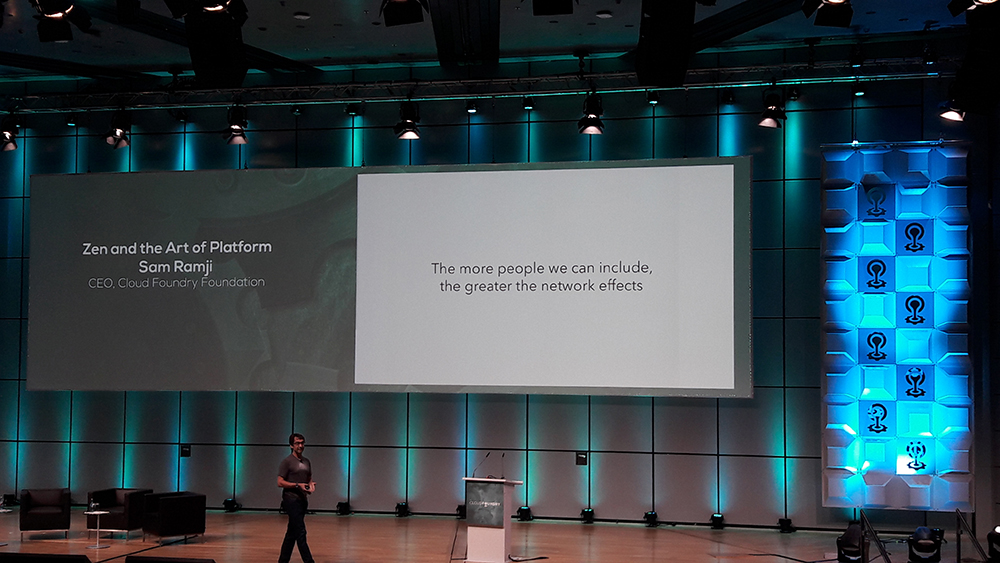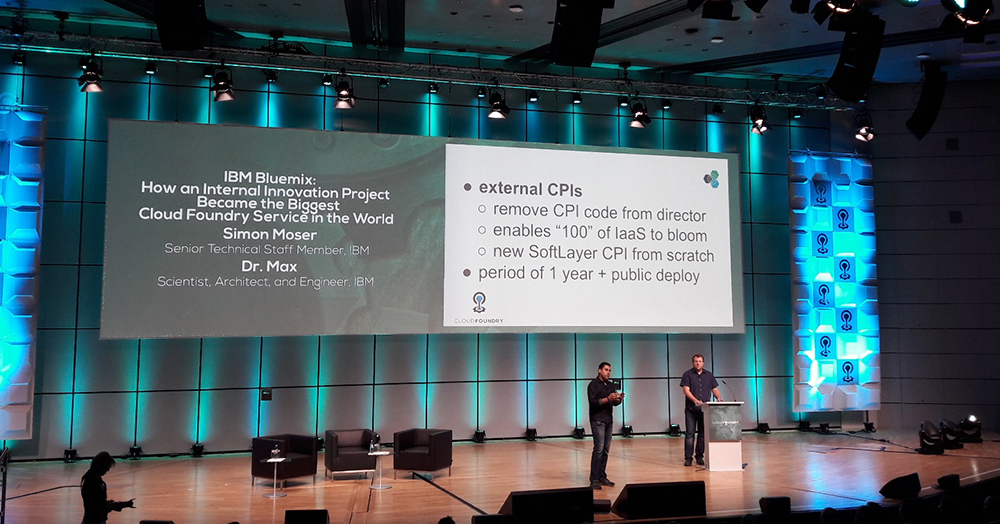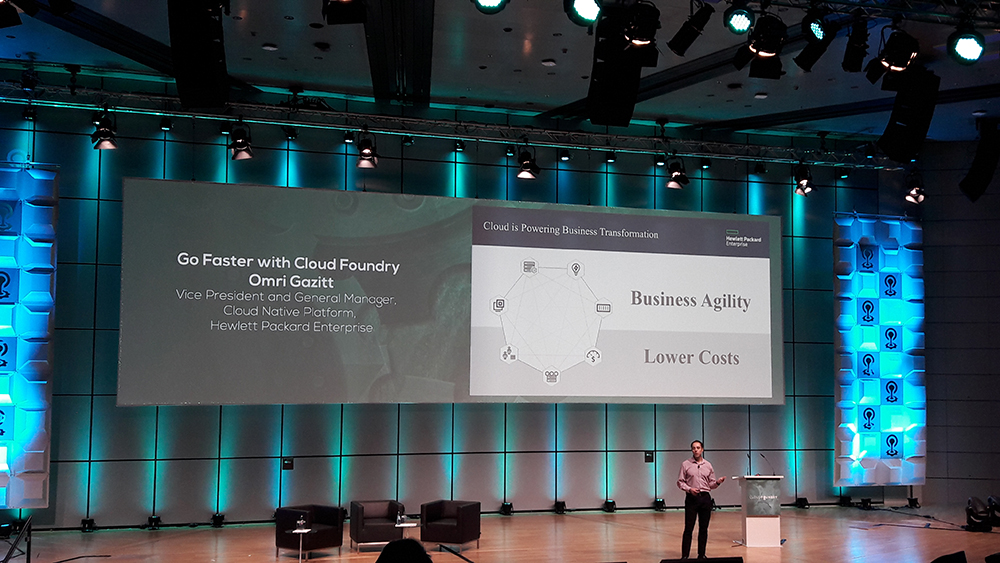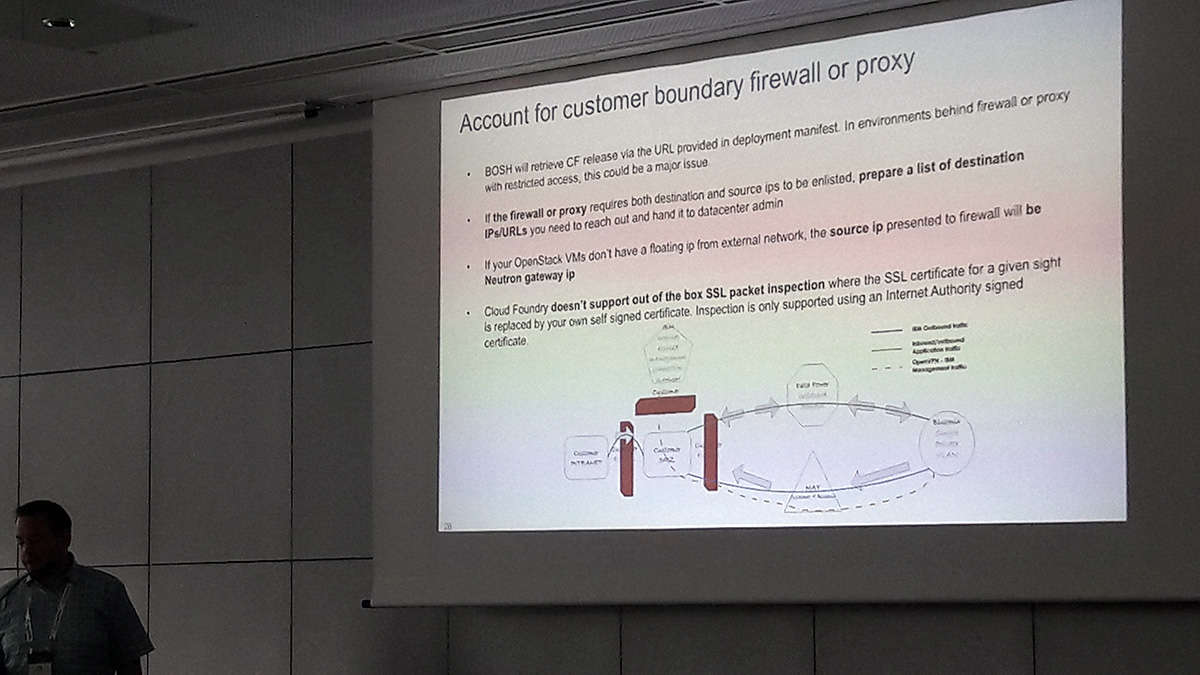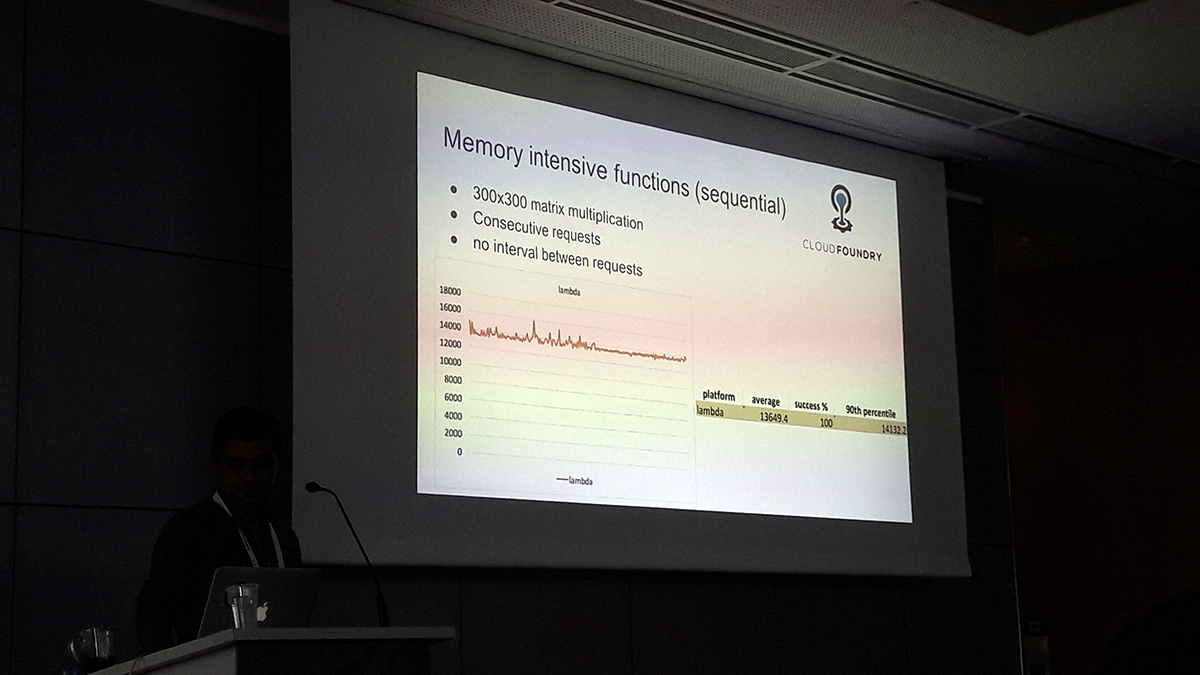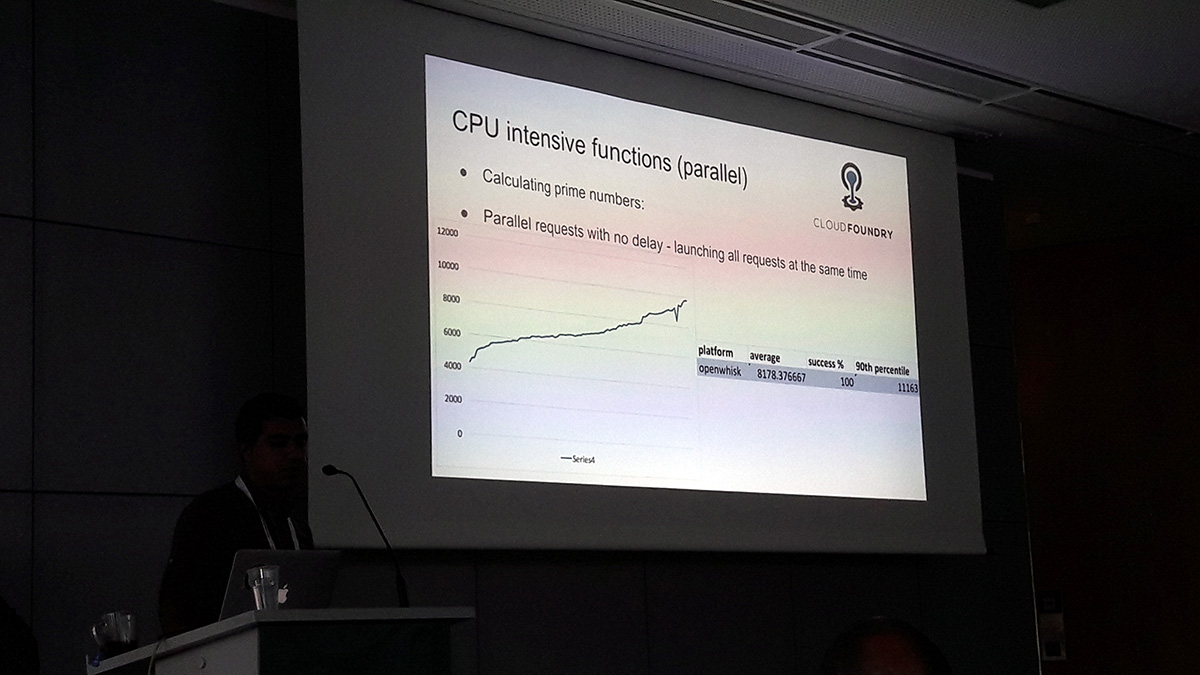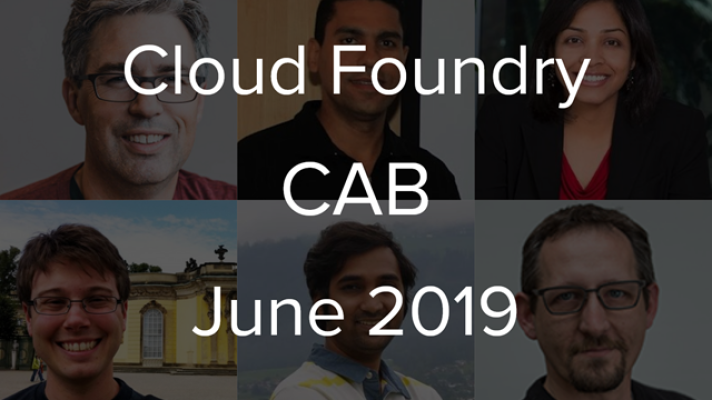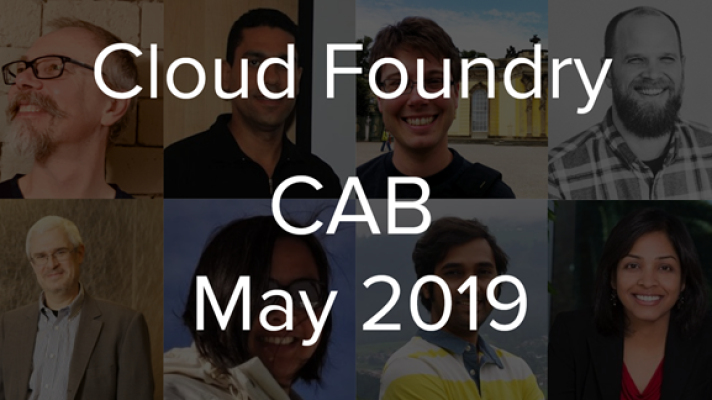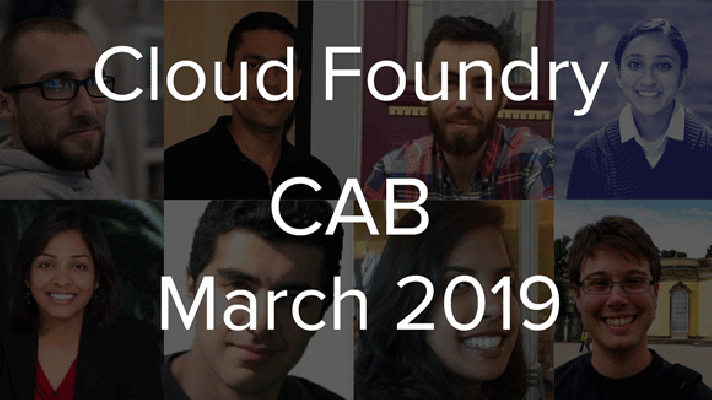Community and Ecosystem Growth at Cloud Foundry Summit Europe (Day 1)
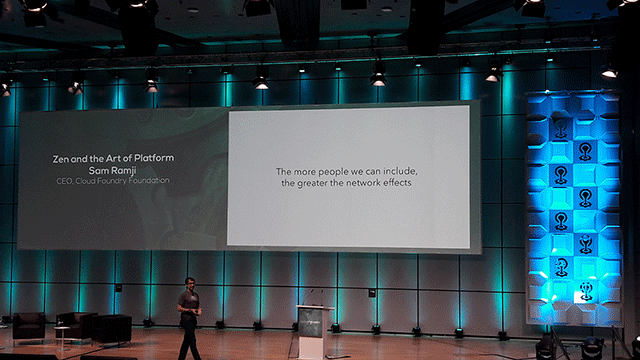
Community and ecosystem were top-of-mind topics during the first full day of the Cloud Foundry European Summit in Frankfurt.
Cloud Foundry Foundation (CFF) CEO Sam Ramji spoke of network effects and the ecosystem during his keynote presentation, noting the continued growth of the community. Cloud Foundry now boasts of 130+ core committers, 2,400+ contributors, and 31,000+ commitees. Membership in the CFF has grown to 65 companies, 195 user groups, and more than 53,000 individual members.
Stormy Peters, the CFF’s Vice President of Developer Relations, elaborated on the growing Cloud Foundry community, citing the diverse array of worldwide meetups, writeups, and related efforts. She said lessons learned included the importance of repeatable meetups with stable dates and venues, co-organizers, deep dives, the need to encourage first-time speakers to emerge from attendees, and “to keep the spirit going.”
The big dogs bark
Three big technology providers—IBM, HPE, and SAP—reported on their use of Cloud Foundry into their company strategies.
Senior Technical Staff Member Simon Moser and Architect Dr. Michael Maxmilien (a.k.a Dr. Max) made a presentation focused on IBM Bluemix, the company’s Cloud Foundry-based initiative. Bluemix has its roots in internal projects, but now has grown to be the “largest Cloud Foundry service,” according to Simon and Dr. Max. It is garnering 20,000 new users per week and 420,000 new apps per month in slightly more than a year of public deployment.
“Open-source collaboration works.” —Simon Moser, IBM
HPE was represented by Omri Gazitt, Vice President and General Manager of Cloud Native platforms. The company originally committed to Cloud Foundry with the acquisition of original distro Stackato from ActiveState, and now offers what it calls Helion Stackato. Omri discussed the twinned issues of increasing business agility while lowering costs, as it seeks to act as a partner in achieving business transformation for its enterprise customers worldwide.
“Once you actually drive down the cycle time to deploy applications many times a week, then you can learn faster what you customers want and you can move faster.” —Omri Gazitt, HPE
SAP’s presentation by Rui Nogueira focused on providing fast, secure, scalable, continuously supported, available, and certified Cloud Foundry services through its HANA program. The company wishes to learn from its customers, work within a growing Cloud Foundry ecosystem, and contribute significantly to the platform’s ongoing development, particularly Diego and Abacus.
SAP committed Service Fabrik Broker to the Cloud Foundry effort. It’s a service broker that provisions service instances as Docker containers and BOSH deployments. On the track, SAP faced the following issues:
- Open-source Cloud Foundry doesn’t have default services.
- Though being flexible and pretty universal, the SB approach in Cloud Foundry isn’t that functional.
- Cloud Foundry doesn’t have a backup/restore solution.
- Cloud Controller is very minimalistic.
Rui also talked about SAP’s collaboration with IBM and Orange on developing:
- Auto Scaler that would increase the size of infrastructure used by Cloud Foundry (with IBM)
- Auto Sleeper that would allow for disabling non-active apps
Event-driven apps with OpenWhisk
IBM was also visible through a presentation on OpenWhisk by Technical Product Manager Andreas Nauerz, presented jointly with Altoros co-founder and CTO Andrei Yurkevich. We’ve previously reported on the OpenWhisk presentation. Andreas and Andrei also showed how OpenWhisk addresses the issue of making Cloud Foundry fast enough to provision containers within fractions of a second.
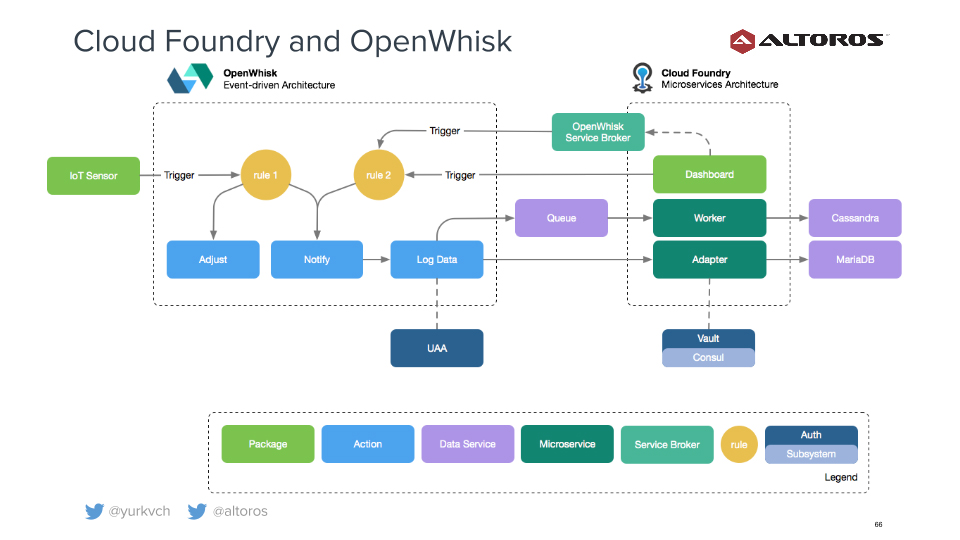
“In IoT apps, devices don’t have to be connected to a server 100% of time”
—Andrei Yurkevich, Altoros
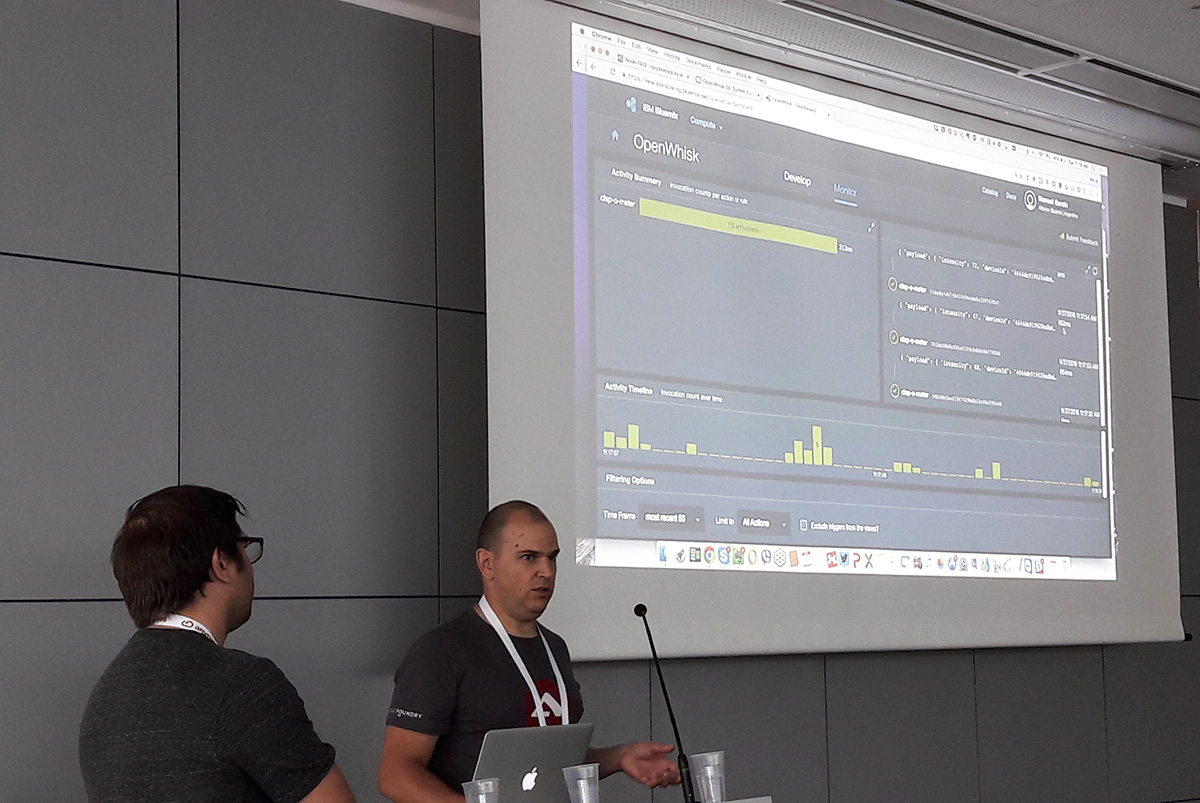
To summarize, OpenWhisk is all about:
- Serverless deployment and operations model
- Optimal utilization and granular pricing
- Scaling on a per-request basis
- Flexible programming model
Polyglot support
Support for higher-level programming constructs (e.g. sequencing) - Open (Apache 2) and open ecosystem
Open interface for event providers
Leveraging Docker, Kafka, and Consul - Scala implementation
Multi-datacenter Cloud Foundry
In their session with Daniel Jones, Colin Humphreys of Pivotal focused on the CAP theorem and exemplified its usage based on the project for booking cinema tickets he was involved in. On adding the second server and database to provide minimal HA, Colin faced the situation when one seat could be booked twice. A conclusion he arrived at was: “Do you really need Cloud Foundry deployed in several DC?”
“What failures do you think you’ll handle with two deployments? Thermonuclear war?”
—Colin Humphreys, Pivotal
Colin explained that apps in Cloud Foundry are expected to be stateless as the platform itself has a state. There are Cloud Controller and UAA DBs, a blobstore, and routing tables—and they need to be in a consistent state if you have two or more CF deployments.
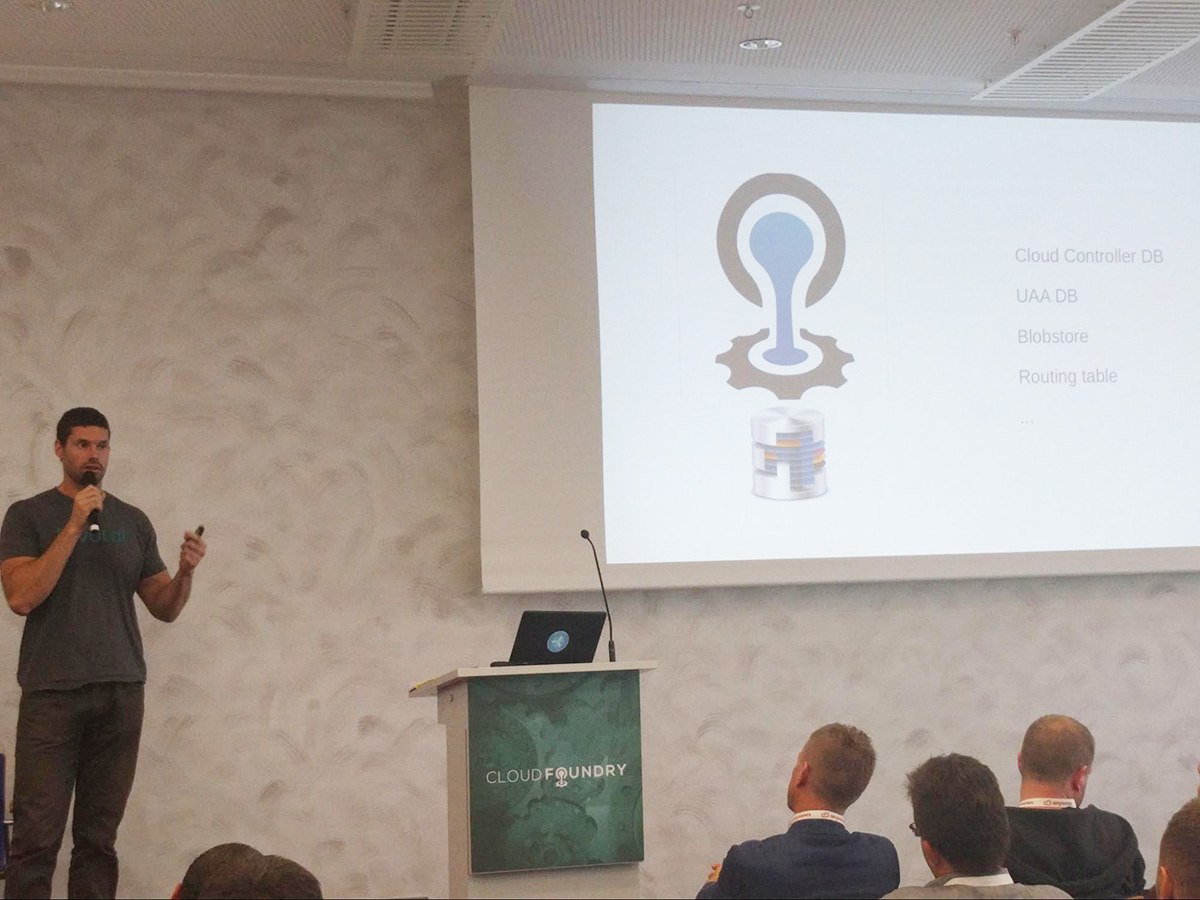
Daniel Jones followed his colleague with a presentation on multi-datacenter Cloud Foundry. He highlighted one of their tools—cf-plex—which allows teams to run the same set of commands in several Cloud Foundry installations. It supports interactive and batch mode. It can also do everything that standard Cloud Foundry CLI does.
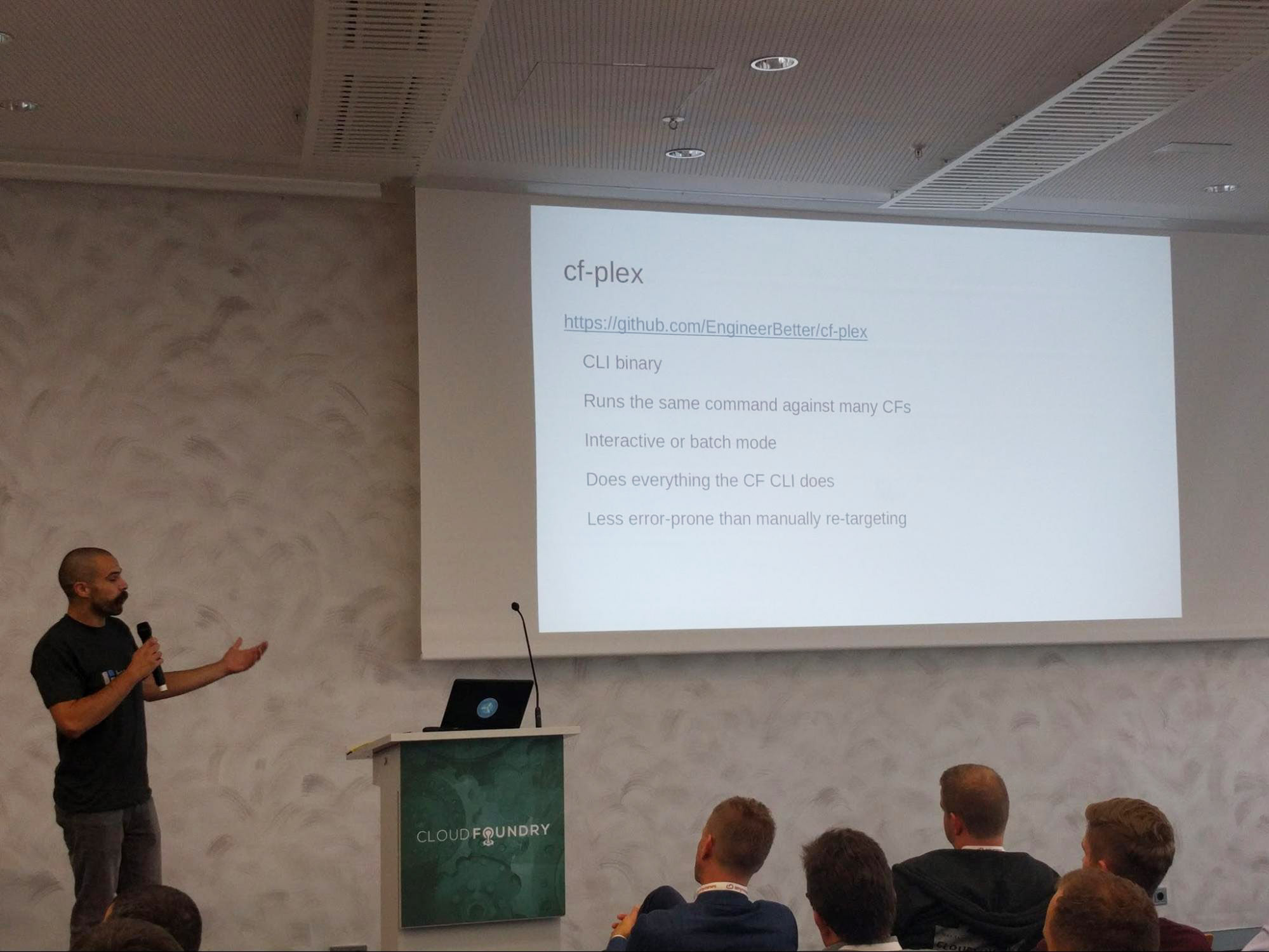
There was another project in progress Daniel mentioned—cf-converger—responsible for converging CF configurations based on YAML files.
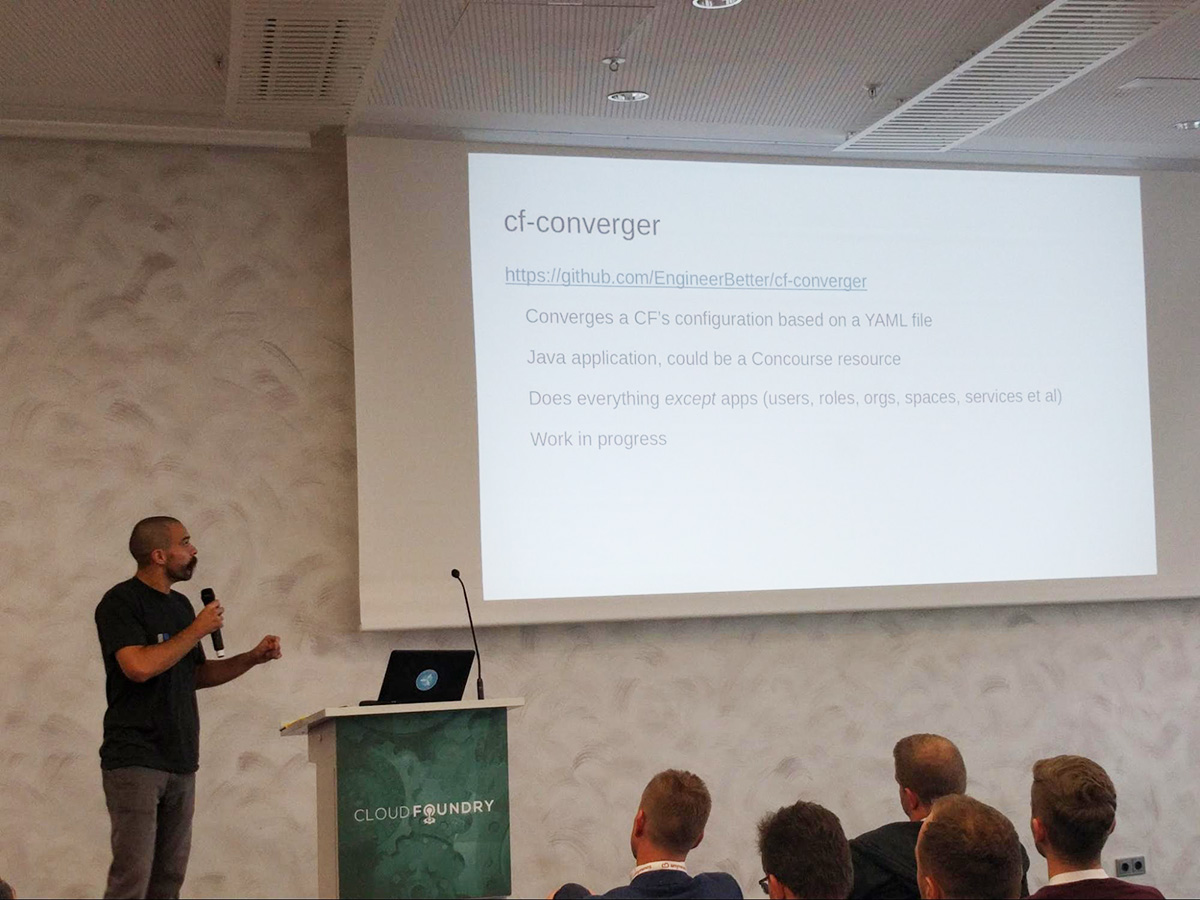
Multiple Cloud Foundry deployments on OpenStack
Following along the lines of multi-datacenter Cloud Foundry, IBM’s Tyler Britten gave a presentation on operating hybrid Cloud Foundry on OpenStack.
During the process, IBM learned the following lessons on optimal security and network:
- Only open ports which are needed. Use the most limited permissions required to complete the job.
- If OpenStack is using a self-signed certificate, configure properties.openstack.connection_options to include the property ca_cert
- Use tenant credentials. Do not use full admin credentials in your BOSH manifest.
- Minimize floating IPs except for the incoming Gateway device (HA Proxy, Datapower, F5 etc.). None of the fabric VMs should be public network or need a floating IP.
Serverless computing
IBM had another presentation, this time with Dr. Max and Nima Kaviani. The duo talked about IBM’s efforts in developing SPECserverless, a benchmark for serverless computing that would allow comparisons of different serverless platforms.
To start off, the benchmark has the following dimensions:
- Invocation. The distribution of the callers or triggers to a serverless function. For instance random, spiked, or periodic distributions are all examples that are likely in real life implementations of server less computing.
- Payload. A serverless function accepts data and returns some data. The size of this input and output may have some impact on its performance.
- Concurrency. A serverless function might have heavy or low concurrency execution. The serverless compute platform needs to deal with these variadic concurrency execution as usages for serverless computing attempt to replace classic server-based long running services.
It also has the following categories:
- CPU. Serverless jobs that make heavy use of the virtual CPU for computation. Good examples are IoT functions that perform complex algorithms to achieve some result with input, e.g., matrix multiplications.
- Memory. Serverless jobs that perform heavy computation in memory without caching intermediary results in a database.
- Data. Serverless jobs that rely on a database to achieve a result. Many data analytics jobs fit into this category as they make use of existing large data sets.
- Network. Serverless jobs that represent some workflow and need to invoke an external network service (potentially another serverless function) before going to the execution of the next steps.
With SPECserverless, IBM hopes to contribute to the eventual creation of a standard serverless benchmark.
Cloud Foundry for SMBs
Altoros, a Gold Sponsor of the summit, offered a presentation from Cloud Engineer JP Genovese that addressed the notion that Cloud Foundry is not necessarily for large enterprises only. He focused on small-to-medium businesses (SMBs) on determining what constitutes a minimal, yet reasonable size for a Cloud Foundry deployment.
“Cloud Foundry is not only for giants.” —Juan Pablo Genovese, Altoros
Noting the necessity to stay within budgets but deliver quickly, JP outlined a minimal product costing that includes Cloud Foundry, MicroBOSH, and various AWS services delivered through reserved instances costing less than US$15,000 over the course of a year. He then took the audience through a technical tour de force (which we will cover in a later article) that could reduce even that amount by 75%.
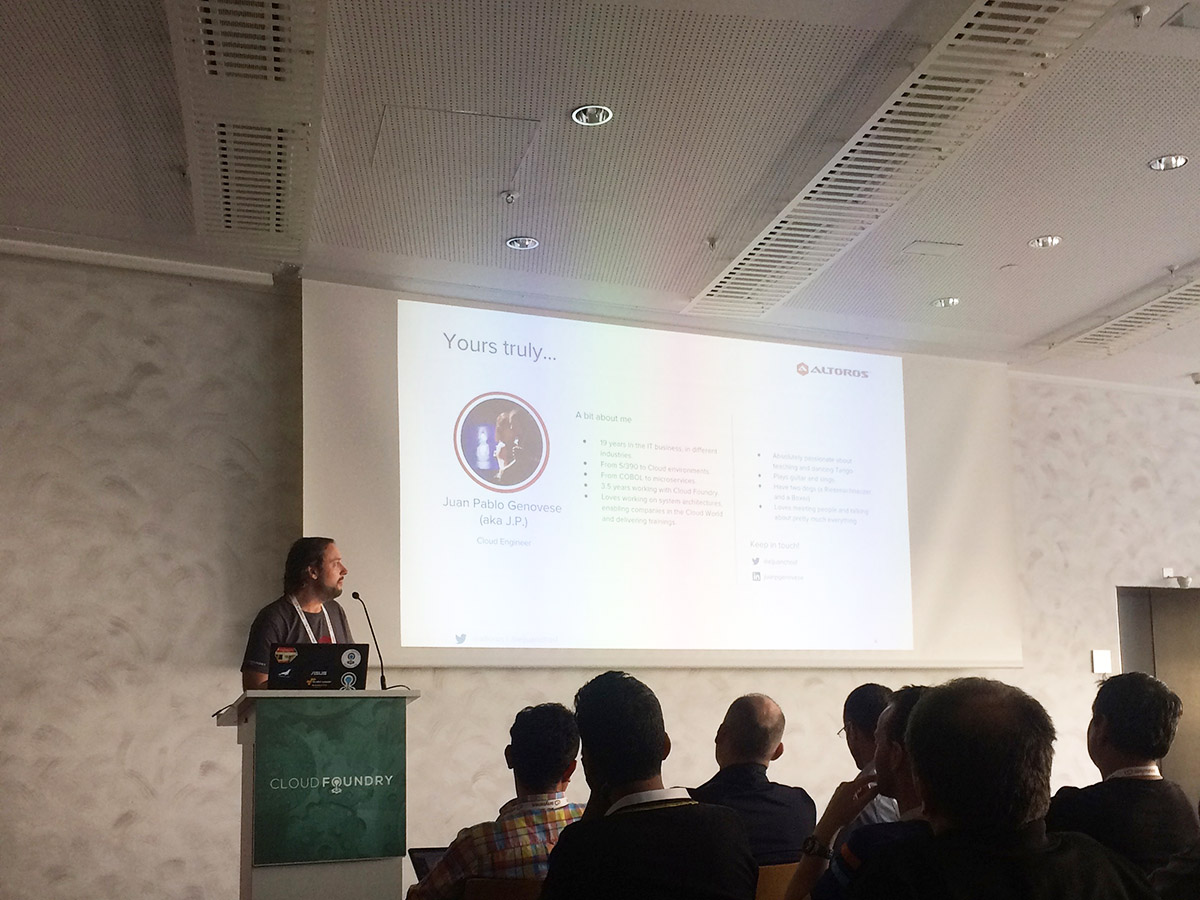
“A killer combo: AWS + MicroBOSH + Cloud Foundry.” —Juan Pablo Genovese, Altoros
More ecosystem news
The first day of the summit was rich for different news—read the overview prepared by the Cloud Foundry Foundation. Altoros was also among those to add to the mix: we announced our participation in the Smart Airline Baggage Management Testbed. (You will find a detailed overview in our tomorrow’s recap.) Exclusively for the summit, Altoros also introduced a Cloud Foundry CLI plugin for managing Predix Analytics Catalog. So, if you’re using GE’s Predix, give it a go and feel free to send us your feedback!
Other CF Summit recaps:
- Cloud Foundry Summit Europe 2016 Begins with Special Interest Groups
- Cloud Foundry Summit Europe Focuses on Multi-Cloud and IoT (Day 2)
- Developing a Perfect Cloud Foundry Engineer (session notes)
- Top 100 Quotes from the Cloud Foundry Summit Europe 2016
This recap is written by Roger Strukhoff, Sophie Turol, Carlo Gutierrez, and Alex Khizhnyak
with assistance from Kirill Grigorchuk.



